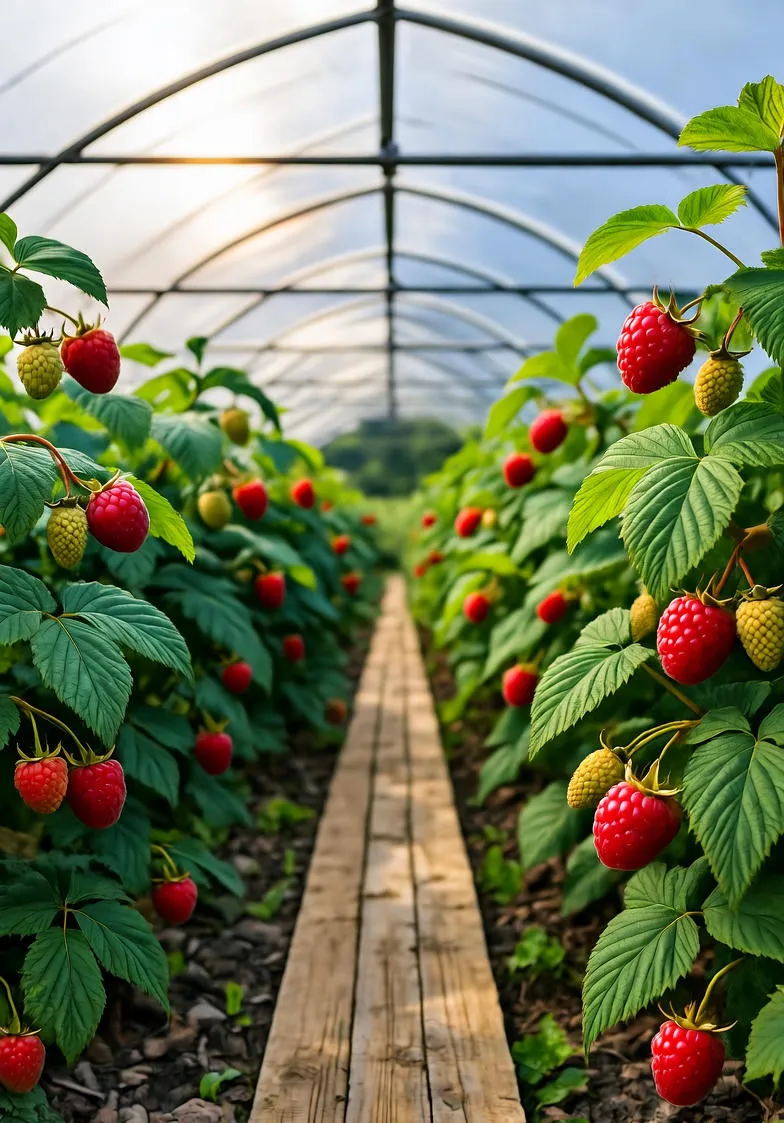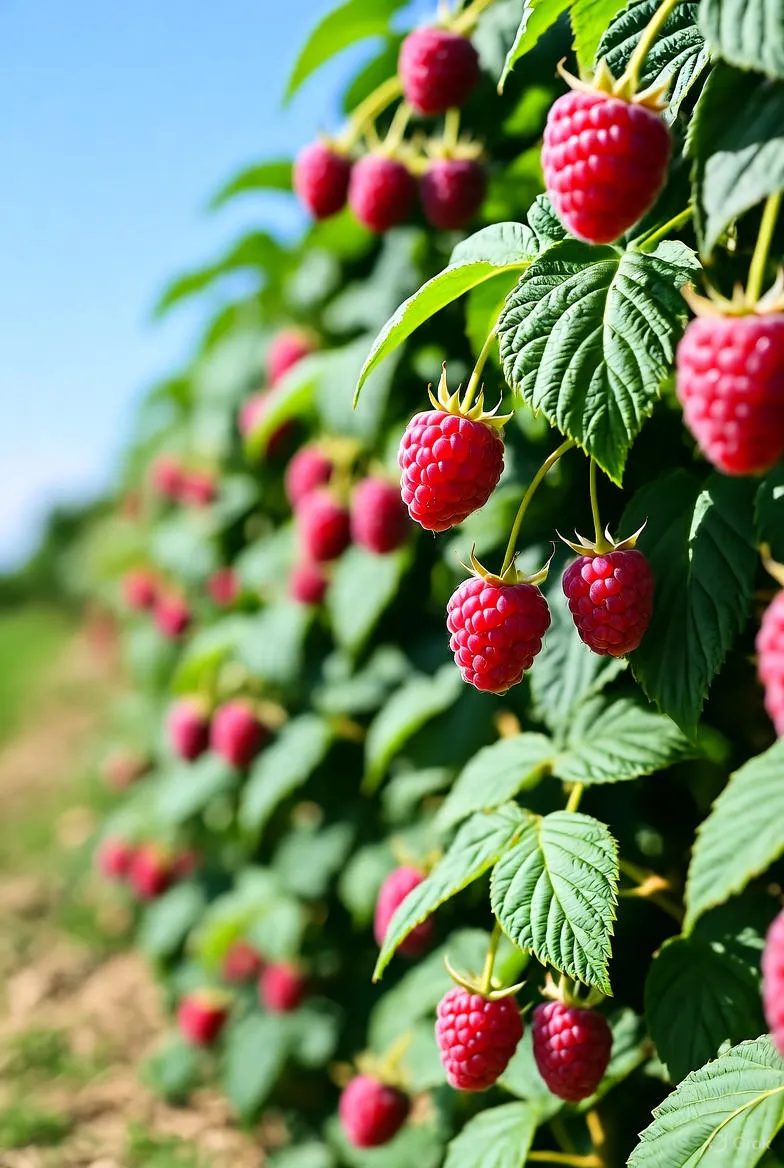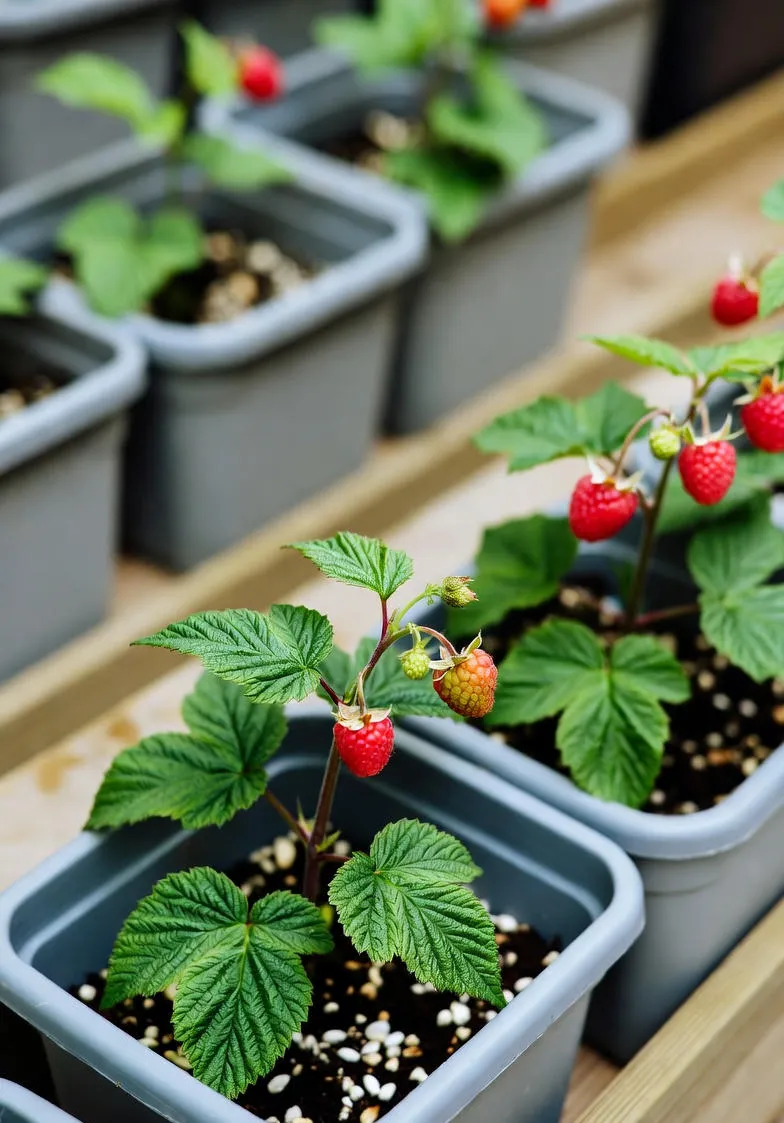Ultimate Guide to Growing Raspberries in Greenhouses: From Setup to Harvest
Discover expert techniques for growing raspberries in greenhouses, including variety selection, planting, care, and harvesting for premium, year-round yields and superior fruit quality.

Introduction
Growing raspberries in greenhouses offers a revolutionary approach to berry cultivation, allowing enthusiasts and commercial growers alike to enjoy fresh, high-quality fruit year-round. Unlike traditional field-grown raspberries, which are limited by seasonal weather and pest pressures, greenhouse production provides a controlled environment that extends the harvest period, enhances fruit size and flavor, and minimizes losses from environmental stresses. Whether you're a hobbyist looking to supplement your garden or a professional aiming for premium off-season markets, mastering greenhouse raspberry growing can be both rewarding and profitable.
Raspberries, belonging to the genus Rubus, are perennial plants with biennial canes that produce fruit on either first-year (primocanes) or second-year (floricanes) growth. This dual-fruiting capability makes them versatile for greenhouse systems, where temperature, humidity, and light can be finely tuned to optimize yields. In this guide, we'll explore every aspect of successful raspberry cultivation in protected structures, drawing on proven techniques from leading agricultural extensions and research institutions.
Benefits of Greenhouse Raspberry Production
The advantages of shifting raspberry production indoors are numerous. First and foremost, greenhouses protect plants from harsh weather, enabling harvests as early as mid-June for floricane varieties or extending into late fall for primocanes—often 2-3 weeks ahead of field schedules in regions like Minnesota or Ontario. This timing aligns perfectly with market demands for fresh, local berries when imports from warmer climates are scarce and subpar in quality.
Quality improvements are striking: berries grown under cover are larger, firmer, and less prone to rot due to drier conditions and precise irrigation. Consumers report superior flavor from fruit harvested at peak ripeness, and shelf life extends up to three weeks under refrigeration. Economically, premium pricing—up to $6 per half-pint—offsets higher setup costs, with yields potentially reaching 16 half-pints per plant in mature systems. Additionally, reduced pesticide needs through biological controls and cultural practices appeal to organic growers, while year-round operation maximizes greenhouse utilization post-other crops like poinsettias.
Choosing the Right Varieties
Selecting appropriate raspberry varieties is crucial for greenhouse success, as different types respond uniquely to controlled environments. Primocane-fruiting varieties, which bear fruit on first-year canes in late summer or fall, are ideal for extended seasons and simpler management. Popular choices include 'Autumn Bliss' for its early ripening and disease resistance, 'Autumn Britten' for firm, flavorful berries, 'Josephine' for double-cropping potential, and 'Caroline' for high yields in humid conditions.
Floricane-fruiting varieties, which fruit on second-year canes after a chilling period, suit scheduled winter production. Standouts are 'Tulameen' for its large, cone-shaped berries with exceptional taste and few pest issues; 'Cascade Delight' for firmness and productivity; and 'Encore' for consistent performance in cooler greenhouses. When choosing, consider your climate zone—less hardy Zone 5 varieties may thrive indoors—and market preferences, such as red, black, or yellow types. Always source certified, virus-indexed stock from reputable nurseries to ensure vigor and freedom from pathogens like crown gall.
Site Preparation and Greenhouse Setup
Preparing your greenhouse site begins with selecting a location offering full sun exposure— at least eight hours daily—and well-drained soil if integrating ground beds, though container systems are preferred for flexibility. Test soil pH (aim for 5.5-6.5) and amend with lime or sulfur as needed; incorporate organic matter like compost a year in advance to build fertility.
For the structure itself, high tunnels or fully enclosed greenhouses work well, with ventilation fans, automated vents, and heating systems essential for temperature regulation. Install a weed barrier on floors to suppress growth, and plan for 3-4 feet of access space between rows. Trellising infrastructure—posts every 20 feet with wires at 3 and 6 feet—should be set up pre-planting. Budget for drip irrigation lines, fertilizer injectors, and humidity gauges to maintain optimal conditions from day one.
Propagation and Planting
Propagation methods vary by scale and timeline. Tissue culture plugs offer uniform, disease-free starts: order 6-12 months ahead, plant into 3-gallon pots filled three-quarters with media, and irrigate immediately to establish shallow roots. Dormant long canes or bare-root stock provide quicker fruiting but carry higher pest risks from field origins— so soak roots overnight and plant post-frost.
Plant in early spring or fall, spacing primocanes 4 feet apart in rows 2 feet wide, and floricanes at 5.5-6 feet for lateral spread. Use pots of 3+ gallons to accommodate fibrous roots, positioning crowns just below the surface. For floricane types, ensure chilling (800-1000 hours below 45°F) via outdoor storage or coolers before forcing indoors at 55-70°F. Initial pinching of tips encourages branching, setting the stage for robust growth.
Soil and Growing Media
Raspberries demand well-aerated, organic-rich media to prevent root rot. A standard mix might include equal parts peat moss, vermiculite, perlite, and sand, adjusted to pH 5.5-6.5 with dolomitic lime. Commercial options like Pro-Mix or Metro-Mix simplify preparation, supplemented with slow-release fertilizers for steady nutrition.
Avoid heavy soils prone to waterlogging; instead, top pots with compost to retain moisture and deter gnats. Monitor for iron deficiencies in alkaline media (above pH 7.0), treating with chelated iron sprays. Regular media refreshment every 2-3 years maintains productivity, as raspberries are sensitive to salt buildup from repeated fertigation.
Nutrition and Fertigation
Balanced nutrition via fertigation ensures efficient uptake without waste. Deliver 100 ppm nitrogen weekly using a complete soluble fertilizer like 5-11-26, blended with calcium nitrate and ammonium sources for pH stability around 6.5. Reduce to 50 ppm during flowering to promote fruit set over vegetative growth.
Key macronutrients include phosphorus for root development and potassium for berry firmness—aim for an N-P-K ratio of 1:2:3 in fruiting stages. Micronutrients like iron and boron prevent chlorosis; conduct leaf tissue analysis annually to fine-tune. Organic alternatives, such as fish emulsion or compost teas, suit eco-friendly operations but require more frequent applications.
Irrigation Systems
Consistent moisture is vital, as raspberries are shallow-rooted and drought-sensitive. Drip systems with pressure-compensating emitters (0.5-1.5 gallons per hour) deliver water directly to pots, minimizing foliar wetness and disease. Install two lines per row for even coverage, filtered to 200 mesh to prevent clogs.
Water quality matters: use low-salt sources (EC <3 mS/cm) with pH 6.0-6.5. Irrigate based on evapotranspiration rates—more in high tunnels due to elevated temperatures—and cease before runoff to avoid leaching. Wetting agents help in aged media, ensuring roots access every droplet for optimal growth.
Climate Control
Maintaining 65-75% relative humidity prevents mite outbreaks and supports pollination, while temperatures of 70°F days and 55°F nights foster photosynthesis without stress. Ventilate to keep CO2 above 1000 ppm for yield boosts, and use fans for air circulation to dry foliage post-irrigation.
Supplemental lighting (16-hour days at 750 foot-candles) accelerates growth in low-light winters, potentially increasing yields by 20-30%. For chilling-dependent varieties, simulate dormancy in coolers at 28-45°F. Monitor with dataloggers to adjust for regional variances, ensuring buds break evenly for synchronized harvests.
Trellising and Pruning
Trellises like V- or T-systems support tall canes (up to 6-8 feet), preventing tangles and improving light penetration. Train primocanes upward and fruiting laterals horizontally for easy picking.
Pruning maintains vigor: for primocanes, tip at 3 feet to spur laterals, thinning to 4 strong canes per plant. Post-harvest, remove spent floricanes at ground level and pinch new growth every 3 weeks. This regimen reduces competition, enhances air flow, and concentrates energy on fruit, yielding larger, healthier berries.
Pest and Disease Management
Integrated pest management (IPM) emphasizes prevention: scout weekly for spider mites (yellow stippling on leaves), controlled via predatory mites like Phytoseiulus persimilis or humidity above 70%. Aphids and thrips succumb to beneficial insects or horticultural oils, while borers require vigilant pruning of wilted tips.
Diseases like botrytis gray mold thrive in damp conditions—combat with spacing, fans, and dry harvesting. Powdery mildew yields to sulfur vapors and resistant varieties; root rots from Phytophthora demand sterile media and certified stock. Bumblebees handle pollination without chemical interference, and perimeter weed control starves alternate hosts.
Harvesting and Post-Harvest Handling
Harvest at full color when berries slip easily from the receptacle—daily checks ensure peak flavor. Pick into half-pint clamshells to minimize bruising, aiming for 2-20 half-pints per plant depending on maturity. Greenhouse fruit stores longer at 34°F, resisting mold better than field counterparts.
Post-harvest, renovate by cutting old canes and mulching lightly. Market fresh for top dollar or process into jams, extending value. Proper handling—gentle transport and quick cooling—preserves the premium quality that defines greenhouse success.
Challenges and Solutions
Common hurdles include high initial costs (around $3,600 for a small setup) and pest persistence in enclosed spaces. Solution: phased investments and biological controls. Heat buildup in summer calls for shading and ventilation; low winter light requires LEDs. Variety trials help match cultivars to your system, while record-keeping tracks improvements over cycles.
Despite challenges, yields escalate in years 2-3, with profits materializing through niche sales. Community resources from extensions like UMN or Cornell provide ongoing support.
Conclusion
Growing raspberries in greenhouses transforms a seasonal delight into a sustainable enterprise, blending science and artistry for bountiful, superior fruit. By selecting robust varieties, fine-tuning environments, and embracing proactive care, you'll harvest not just berries, but the satisfaction of innovation. Start small, learn iteratively, and watch your greenhouse bloom with ruby-red abundance year after year.


